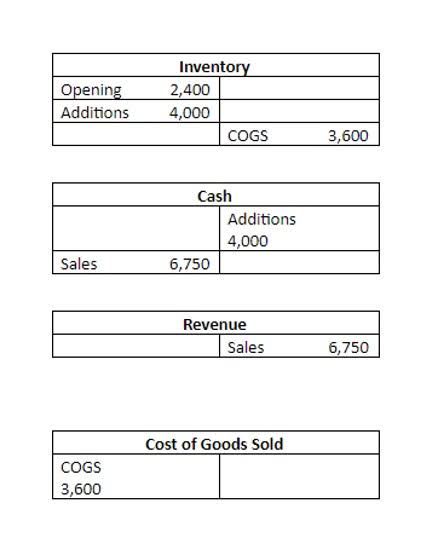
However, many pride themselves on paying consistent and/or increasing dividends every year. Regularly assess your retained earnings in the context of your business objectives and shareholder needs, perhaps with the help of financial advisors. The dividend preferences of shareholders can influence retained earnings, especially in dividend-focused industries. At 100,000 shares, the market value per share was $20 ($2Million/100,000), however, after the stock dividend, the market value per share reduces to $18.18 ($2Million/110,000).
What is the retained earnings equation?
- They do not represent assets or cash balances that companies have kept.
- To find retained earnings, you’ll need to use a formula to calculate the balance in the retained earnings account at the end of an accounting period.
- Retained earnings are a type of equity and are therefore reported in the shareholders’ equity section of the balance sheet.
- The retained earnings calculation is essential for understanding a company’s ability to reinvest in itself, pay off debt, or fund its own growth without needing additional outside funding.
After paying dividends, the remaining value is added to the balance of retained earnings continuing from previous financial years. The retained earnings recorded in the company’s balance sheet are https://www.bookstime.com/ part of the entity’s book value. Generally, when a corporation earns revenue there is an increase in current assets (cash or accounts receivable) and an increase in the retained earnings component of stockholders’ equity .

Stock Dividends on the Balance Sheet

Besides his extensive derivative trading expertise, Adam is an expert in economics and behavioral finance. Adam received his master’s in economics from The New School for Social Research and his Ph.D. from is retained earnings a liability the University of Wisconsin-Madison in sociology. He is a CFA charterholder as well as holding FINRA Series 7, 55 & 63 licenses. He currently researches and teaches economic sociology and the social studies of finance at the Hebrew University in Jerusalem. PwC refers to the US member firm or one of its subsidiaries or affiliates, and may sometimes refer to the PwC network. This content is for general information purposes only, and should not be used as a substitute for consultation with professional advisors.

Company
On the other hand, though stock dividends do not lead to a cash outflow, the stock payment transfers part of the retained earnings to common stock. For instance, if a company pays one share as a dividend for each share held by the investors, the price per share will be cut in half because the number of shares will double. Because the company has not created any real value simply by announcing a stock dividend, the per-share market price is adjusted according to the proportion of the stock dividend. There is no change in the shareholder’s when stock dividends are paid out, however, you’ll need to transfer the amount from the retained earnings part of the balance sheet to the paid-in capital. The amount transferred to the paid-in capital will depend upon whether the company has issued a small or a large stock dividend.
If a company declared a $1 cash dividend on all 100,000 outstanding shares, then the cash dividend declared by the company would be $100,000. Both management and stockholders would also want to utilize surplus net income towards the payment of high-interest debt over dividend payout. This money can partly be distributed as dividends to the stockholders, while also being reinvested for business growth.
- At the end of that period, the net income (or net loss) at that point is transferred from the Profit and Loss Account to the retained earnings account.
- In this situation, the LLC may be able to treat these retained earnings as corporate profits rather than personal profits.
- This process adds the profits or losses to the retained earnings balance.
- Typically, financial statements include a statement summarizing how this account has changed in the current period.
- Yes, retained earnings carry over to the next year if they have not been used up by the company from paying down debt or investing back in the company.
- For an analyst, the absolute figure of retained earnings during a particular quarter or year may not provide any meaningful insight.
They are claims on the assets by people and entities that are not owners of the business. The first two asset accounts are those you are familiar with so far. These are current assets, which means they are either cash or are expected to be converted to cash within one year.
Part of the ROE ratio is the stockholders’ equity, which is the total amount of a company’s total assets and liabilities that appear on its balance sheet. Retained earnings are affected by an increase or decrease in the net income and amount of dividends paid to the stockholders. Thus, any item that leads to an increase or decrease in the net income would impact the retained earnings balance. Now, you must remember that stock dividends do not result in the outflow of cash, in fact, what the company gives to its shareholders is an increased number of shares. As a result, each shareholder has additional shares after the stock dividends are declared, but their stake remains the same. The next step is a calculation of any dividend that has to be paid out.
Equation
Retained earnings appear on the balance sheet under retained earnings the shareholders’ equity section. Dividends paid are the cash and stock dividends paid to the stockholders of your company during an accounting period. Where cash dividends are paid out in cash on a per-share basis, stock dividends are dividends given in the form of additional shares as fractions per existing shares. Both cash dividends and stock dividends result in a decrease in retained earnings. The effect of cash and stock dividends on the retained earnings has been explained in the sections below. In the case of the yearly income statement and balance sheet, the net profit, as calculated for the current accounting period, would increase the balance of retained earnings.
How to Calculate Retained Earnings
A company’s share price is often considered to be a representation of a firm’s equity position. An alternative calculation of company equity is the value of share capital and retained earnings less the value of treasury shares. In most cases, retained earnings are the largest component of stockholders’ equity. This is especially true when dealing with companies that have been in business for many years. Conceptually, stockholders’ equity is useful as a means of judging the funds retained within a business. If this figure is negative, it may indicate an oncoming bankruptcy for that business, particularly if there exists a large debt liability as well.

